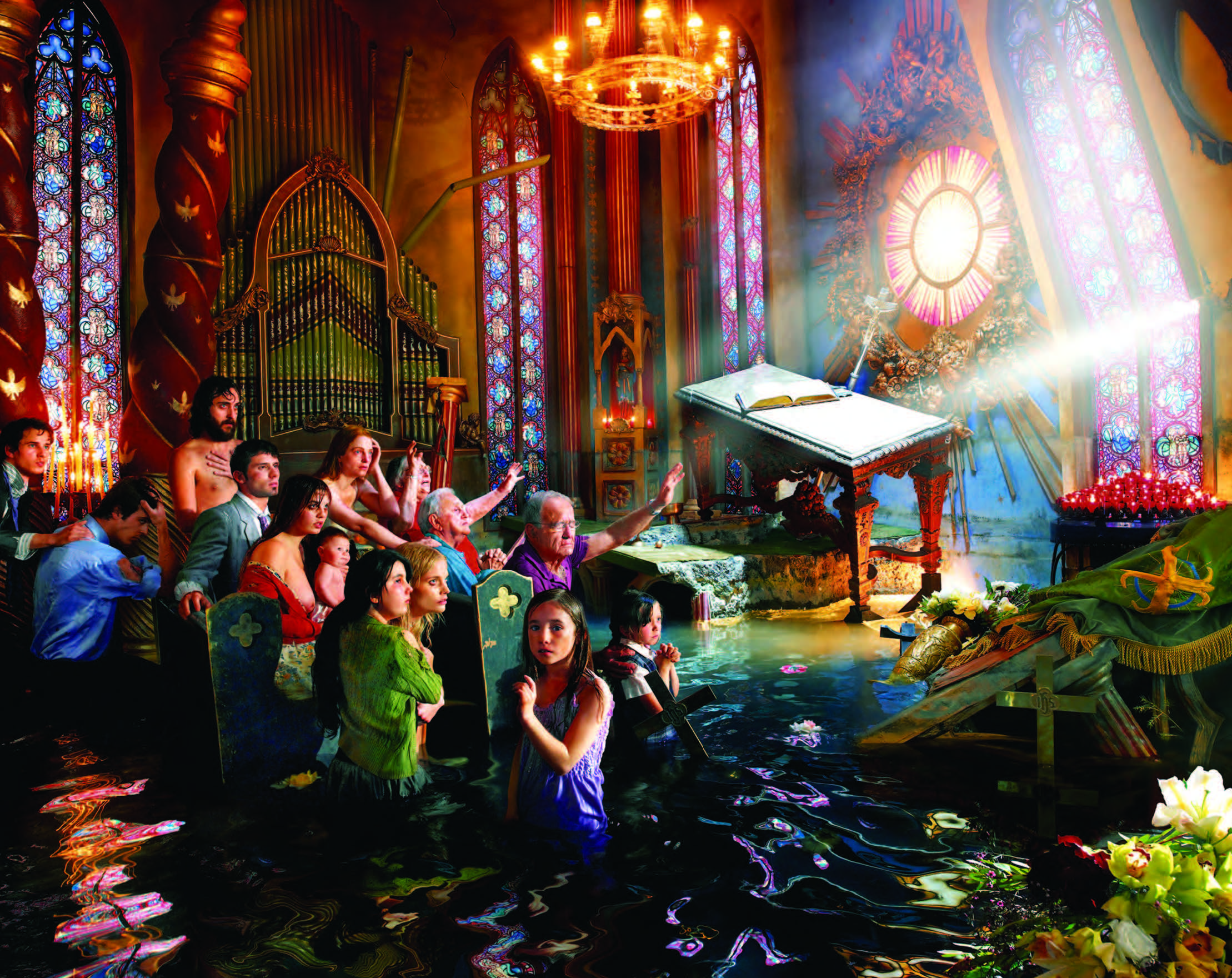FEATURE: DAVID LACHAPELLE - MODERN DAY MICHELANGELO
MODERN DAY MICHELANGELO
He is regarded as one of the most influential photographers of our time, has been compared with all-time greats as Man Ray and Helmut Newton, while anyone who is someone in “celebrity-land” has to wait in line to be portrayed by him. Still, David LaChapelle stood at the point of becoming a gardener in Hawaii. At the time, he had spent some two decades working as a fashion and celebrity photographer, and was fed up. He still is.
“The people that look the most artificial, are often the most real.”
“The fashion industry is no place to grow old. You cannot age with dignity in the fashion world. Everything has to be new, new, new, all the time. Everything is replaceable,” LaChapelle said at a 2008 press conference in Stockholm, which hosted a major retrospective of his work.
“It’s all about what it looks like, not about what it means,” he added.
The fast pace of fashion and the mysterious powers that determine what is in today and out tomorrow can indeed be cruel. It can even turn deadly. In 2007, British stylist Isabella Blow who has been credited with the discovery of fashion designer Alexander McQueen, committed suicide. In addition to being ill, she had told friends that “she could no longer find a home” in the fashion world that she had helped create, yet that no longer liked her work.
Fortunately, LaChapelle did not fly to Hawaii to have a go at gardening, thanks to curator Fred Torres who persuaded him to do a show at his New York gallery. The exhibition was an overwhelming success and LaChapelle today can pretty much do anything he likes. Represented worldwide by Fred Torres, LaChapelle’s work has been shown in nearly all of the world’s leading galleries and published in a handful of books.
Born in Connecticut in 1963, LaChapelle moved to New York in the 1980s to study photography and fine arts. As most aspiring photographers, his aim was but to do his own work. He soon found out however, that the city’s art galleries were not exactly standing in line for him. Help came in the shape of Andy Warhol who asked him to work for Interview, the leading New York magazine at the time.
“I got this idea in my head that magazines were like a gallery and if you got your magazine page ripped out and someone stuck it on their refrigerator, then that was a museum – someone’s private museum,” LaChapelle said in an interview with Gianni Mercurio.
At Interview, LaChapelle gradually developed the colorful, in-your-face style that has become his own. He always loved the erotic, the risqué, the fashionable, and always had a special interest in transvestites. One of his muses is the doll-like Amanda Lepore a.k.a. the Marilyn Monroe of the transsexual world.
”The people that look the most artificial are often the most real,” LaChapelle once said.
After Interview, LaChapelle went on to become the absolute darling of fashion photography, doing covers for such magazines as Rolling Stone, Vanity Fair and Vogue. However, since that last shoot in Italy in 2005, LaChapelle has sworn never to do fashion again. Just art.
Interestingly though, LaChapelle continued to use the same staged techniques, no longer to glorify fashion and celebrities, but to hold up a mirror of our consumer-driven society. His work today is iconic and ironic, all at the same time. It is 21st century pop art with a twist. Take for example his portrait of Leo DiCaprio as a 1950s hamburger sales boy or Britney Spears as an American Lolita with “Baby” written on her behind. It’s bittersweet and somehow deeply sad.
Thanks to his love for the grotesque and surreal, LaChapelle is often called the “Fellini of Photography.” He has so far published four books, including Artists and Prostitutes, a collection of his most famous celebrity portraits, and Heaven to Hell, his most complete book to date. With the dance documentary Rize, he has moreover established himself as a filmmaker to be reckoned with.
While his work deals with such themes as consumerism, celebrity and modern Christian iconography, LaChapelle himself does not like to label his work.
“It’s really about America today,” he once said.
Asked to describe his work in the words of his best friend, he replied: “Escapist fantasies, celebratory, beautiful.”
Some examples? A beautiful yet dazed woman stands in the street, while three men in suit appear from behind a giant plastic piglet. A junkie-like Pieta (Courtney Love) tenderly holds a Jesus-like figure. A giant plastic hamburger crushes a woman on the street. A woman lies naked in between steaks and sausages in a butcher shop. Four models eating raw steaks with chopsticks. A doll-like model with a bra stands in front of a wall of bras. Dolly Parton sits amidst a dozen of teddy bears lying in front of LA’s “Dollywood.”
David LaChapelle does not do self-portraits. However, some people say every artwork in a way is a reflection of the artist’s inner self. If that is the case, the photo that comes closest to being a self portrait is arguably the image of a well-built beau standing in the midst of a ruined American suburb holding up a giant chain saw.
TEXT BY PETER SPEETJENS


